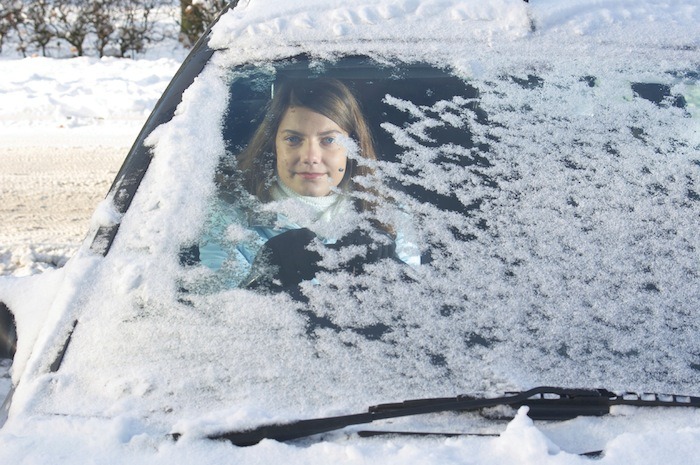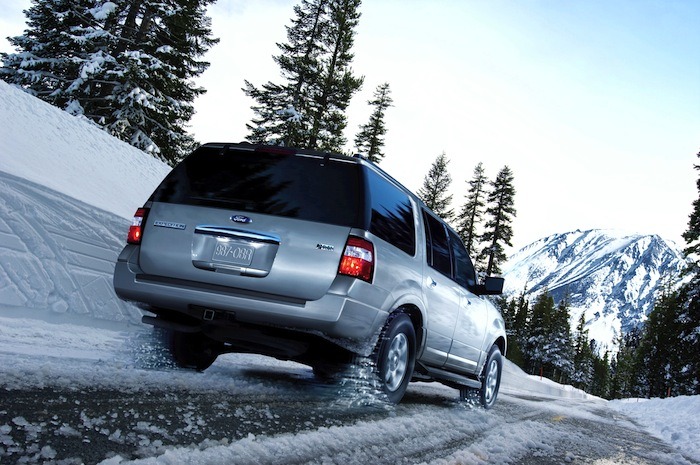Winter weather can be both frightening and dangerous for automobile travel. Anyone who gets behind the wheel should practice safe winter driving habits. A parent’s job is not just to teach a teen about the precautions to take while driving on winter roads, but also to prevent the most dangerous situations from happening before their teens get behind the wheel.

But equipping your car with the proper winter accessories (windshield wipers, winter tires, emergency safety kit…) isn’t going to make a difference if they aren’t focused. It is very important for parents to relay the dangers of distracted driving which has been ranked one of the most dangerous driving habits, second to drinking and driving especially in winter weather when reactions times are crucial.
According to a survey by Ford of Canada 93 per cent of Canadian teens, and 97 per cent of their parents report driving while distracted by technology. Can you believe that in Ontario 73% of teens confessed to using hand-held technology, such as talking on a cell phone or texting while behind the wheel? The use of hand held technologies is said to be one of the most common distractions for drivers, and that drivers engaged in text messaging in the vehicle are 23 times more likely to be involved in a collision compared with non-distracted drivers.
The good news is that automobile manufacturers like Ford of Canada are automating numerous safety components into their new cars, leaving today’s distracted drivers less distracted. Safety technologies such as MyKey® and Ford SYNC® have important roles to play in limiting distractions and helping to change behaviours.

Driver Technologies
- SYNC – Uses voice commands to offer hands-free control of multiple functions, including phone calls, texting, music selection and navigation, allowing drivers to keep their eyes on the road and hands on the wheel.
- MyKey® – features a “Do Not Disturb” function which blocks incoming calls and deters text messages. Calls are diverted to voicemail and text messages are saved on the device for later viewing. MyKey® also has the ability to set a maximum speed level, limit the volume on the sound system, and disable the sound system altogether until seatbelts are buckled.
- Lane Keeping Aid – in case a driver’s attention drifts, this technology activates when the driver leaves his or her lane without a turn signal, and gently steers the vehicle back into the correct lane.
- Adaptive Cruise Control – helps maintain a safe distance between vehicles. Monitors a lead vehicle, adjusting the speed of the vehicle on cruise control to keep it at a pre-set distance behind the vehicle ahead of it.
- Collision Warning with Brake Support – Alerts drivers of a potential collision. Uses radar sensors to warn of vehicles ahead that are within a pre-set distance. The driver is alerted by a head-up display and an audible warning signal.
Helping teens understand the realities of the dangers of distracted driving and stepping up our preventive oversight of new drivers, parents and all who oversee young drivers can help in keeping our teens and streets safe.
Author Bio: Maxine is a French Canadian PR consultant at Thornley Fallis Communications and IABC Ottawa volunteer. Maxine leads a blogger program in Ottawa on behalf of Ford of Canada. She is an active member of the Ottawa community both offline and on and can be found on Twitter @MaxineRosalie.

Catherine (@AlwaysARedhead)
My husband took the teenage boy (19yrs) and middle child (21yrs) go carting in the summer. Middle child tried texting while driving one of the cars, she crashed numerous times. It gave her a very clear picture of why texting, or distractive driving is a huge issue.
CL
I find this stat to be extremely high. I’m surrounded by teens and they are the ones that seem to be more responsible when it comes to texting or drinking when/and driving. There are so many adults that do this on a continuos basis but yet all advertising is geared at teens. I personally think there’s something wrong with this.
Candace Derickx
Well the stats do say that more adults than teens are distracted while driving, 97% as opposed to 93% of teens. I think it’s an education campaign much like drinking and driving was.
Candace Derickx
Wow, talk about getting a message across. Great idea.